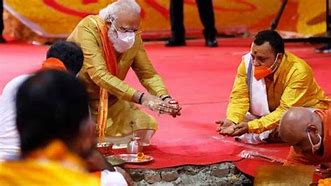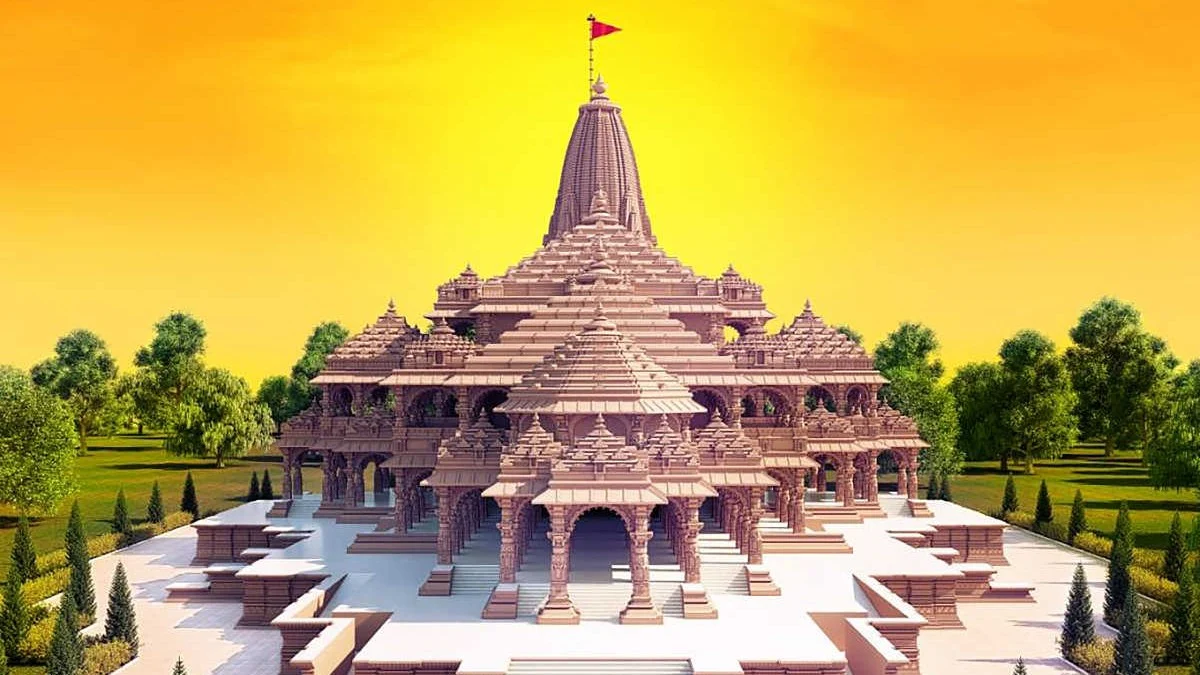The air in Ayodhya is charged with anticipation and reverence. It is the historic day of the consecration ceremony for the Ram Mandir dawns. It is the culmination of decades of legal battles, societal discussions, and religious sentiments. This event holds profound significance for millions of Hindus worldwide. The sun rises over the holy city, marking the beginning of a new chapter in Ayodhya’s history. Devotees and onlookers alike gather to witness the auspicious ceremony. This day will see the foundation of the grand Ram Mandir laid. In this blog post, we will delve into the various aspects of this momentous occasion. We will explore the historical context, the significance of the Ram Mandir. We will also oversee the ceremony’s proceedings, and the broader implications for the diverse cultural fabric of India.
A Historical Prelude – Unraveling the Tapestry of Ayodhya’s Past.
To understand the profound impact of the consecration ceremony, one must delve into the intricate tapestry of Ayodhya’s history. Ayodhya, believed to be the birthplace of Lord Ram, has been a symbol of cultural and religious importance for centuries. The controversy surrounding the Babri Masjid, built in the 16th century, led to a prolonged legal battle over the disputed site. The culmination of this dispute came in 2019 when the Supreme Court of India delivered a landmark verdict. It paved the way for the construction of the Ram Mandir. The consecration ceremony is not just a religious event; it marks the resolution of a complex and contentious historical chapter. It brings a sense of closure and unity to the people of Ayodhya and the nation at large.
The Significance of the Ram Mandir – Reverence and Devotion
The Ram Mandir holds profound significance for millions of Hindus who revere Lord Ram as a symbol of righteousness and virtue. The construction of the temple is seen as the realization of a long-cherished dream. It is a momentous occasion that reaffirms the cultural and spiritual identity of the Hindu community. The temple, designed to be a magnificent architectural marvel, is dedicated to Lord Ram. It will become a center for pilgrimage and worship. The consecration ceremony is not just the laying of the foundation stone; it is a symbolic act that resonates with the deep spiritual and cultural roots of India, fostering a sense of unity and shared heritage among its people.

The Ceremonial Splendor – Ceremonial Aspects of the Consecration.
The consecration ceremony itself is a grand spectacle, blending religious rituals with the rich cultural traditions of Ayodhya. Priests and religious leaders from across the country gather to perform elaborate ceremonies. They invoke divine blessings for the successful construction of the Ram Mandir. The rituals include Vedic chants, yajnas (fire offerings), and the placement of sacred stones. Each step carefully choreographed to adhere to the religious customs and traditions outlined in ancient scriptures. The ceremony is a celebration of faith, marked by the participation of millions. These people offer prayers and witness the historic event, creating an atmosphere charged with spiritual fervor and collective joy.

Impact on India’s Cultural Landscape.
The consecration of the Ram Mandir in Ayodhya is not merely a religious event. It carries broader implications for India’s cultural and social fabric. It reflects the spirit of unity in diversity, emphasizing the coexistence of different faiths within the country. While the construction of the temple fulfills the aspirations of the Hindu community, it also calls for mutual respect and understanding among India’s diverse religious groups. The government’s commitment to the inclusive development of Ayodhya as a ‘Dharma Nagari’ or city of religious harmony further underscores the broader message of unity and fraternity. As the consecration ceremony unfolds, it becomes a poignant moment in India’s history, symbolizing the ability of its people to overcome differences and build a shared future rooted in cultural pluralism.
Conclusion.
The consecration ceremony for the Ram Mandir in Ayodhya is a day of historic proportions, marking the culmination of a long-standing cultural and legal saga. As the foundation stone is laid, and the ceremonies unfold, Ayodhya becomes a symbol of unity and shared heritage for the diverse communities that call India home. Beyond the religious and historical significance, the event calls for a collective acknowledgment of India’s rich cultural tapestry and the need for mutual respect and understanding. The Ram Mandir, with its grandeur and spiritual essence, becomes a beacon of reverence and devotion, resonating with millions who witness this momentous occasion. In the heart of Ayodhya, a new chapter begins—one that celebrates the past, embraces the present, and lays the foundation for a harmonious future.
Utpal Khot
Copyright © Utpal K
1. If you share this post, please give due credit to the author Utpal Khot
2. Please DO NOT PLAGIARIZE. Please DO NOT Cut/Copy/Paste this post
© Utpal K., all rights reserved.
Copyright Notice: No part of this Blog may be reproduced or utilized in any form or by any means, electronic or mechanical including photocopying or by any information storage and retrieval system, without permission in writing from the Blog Author Utpal Khot who holds the copyright.





